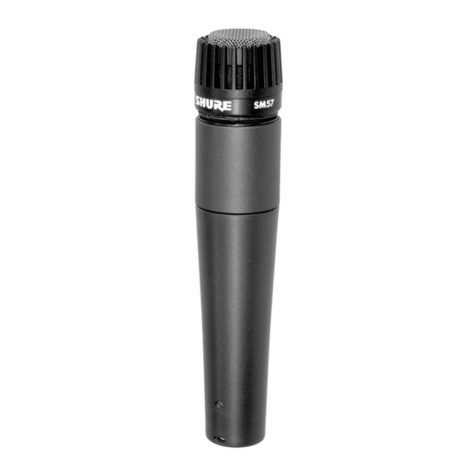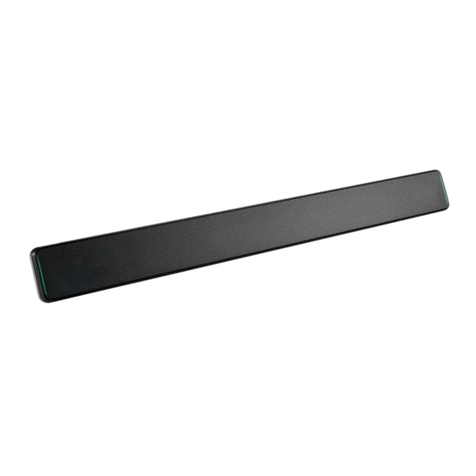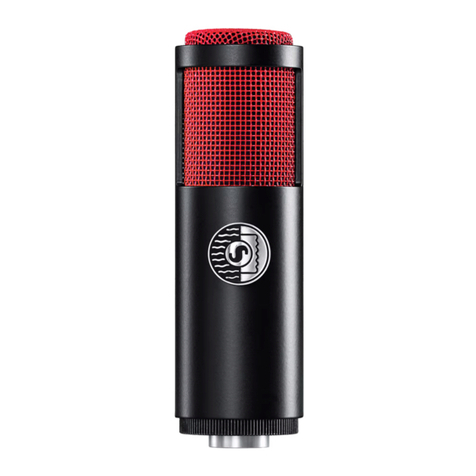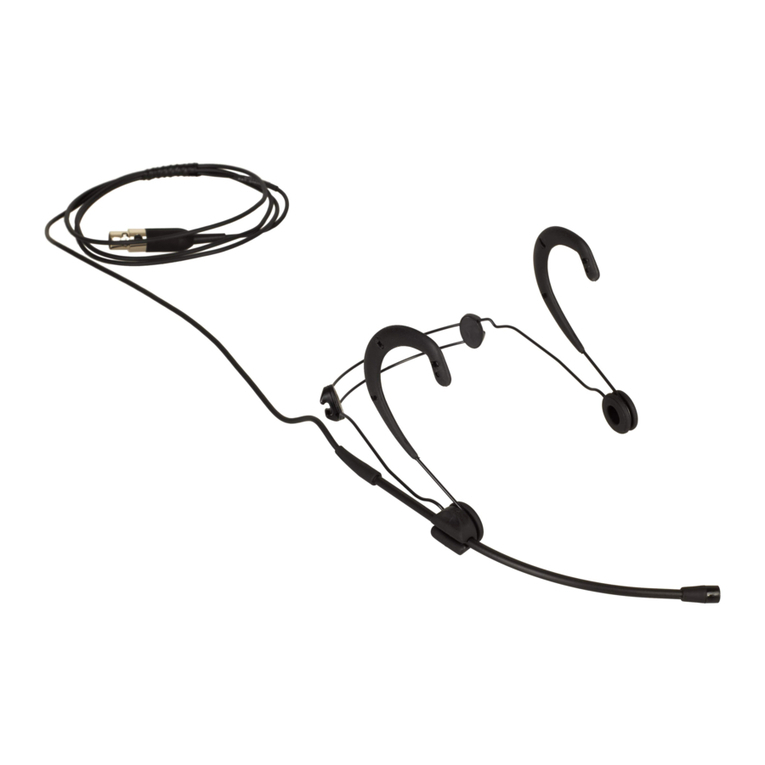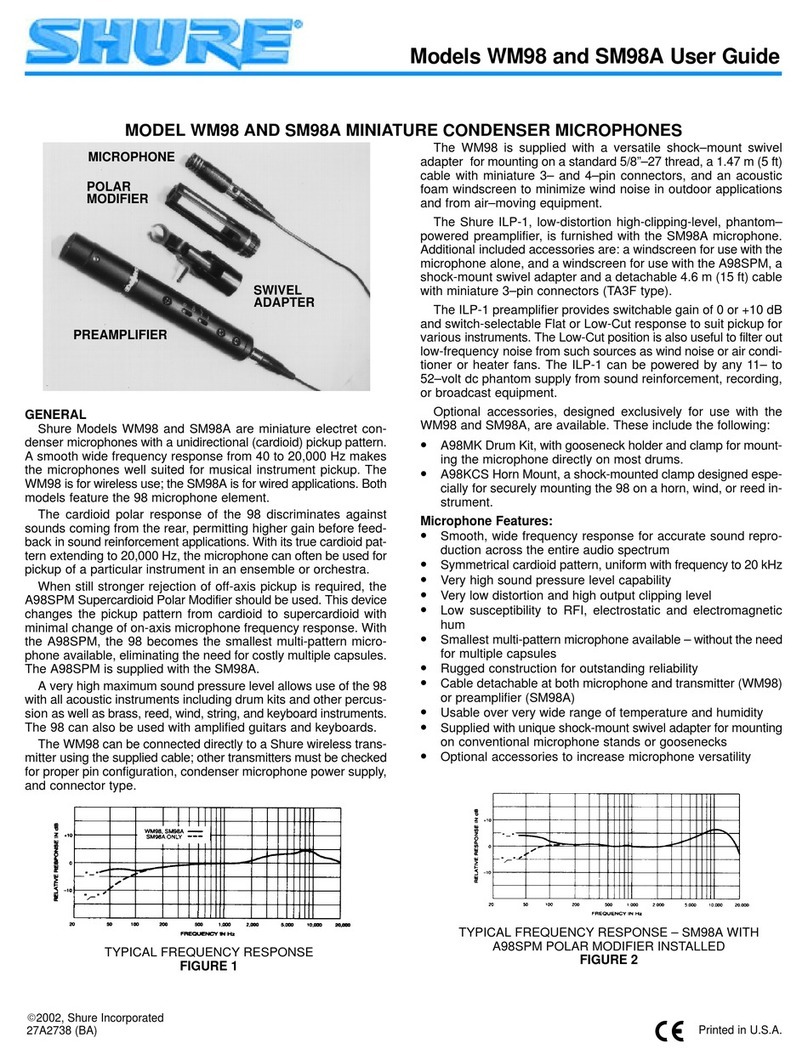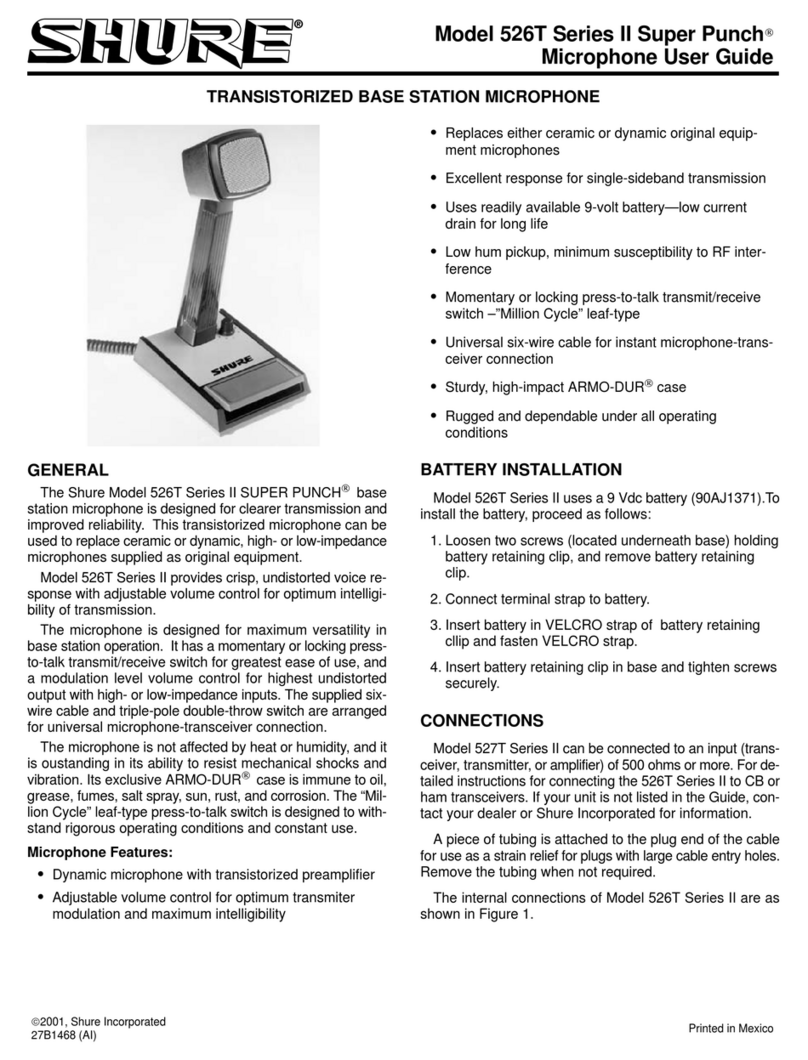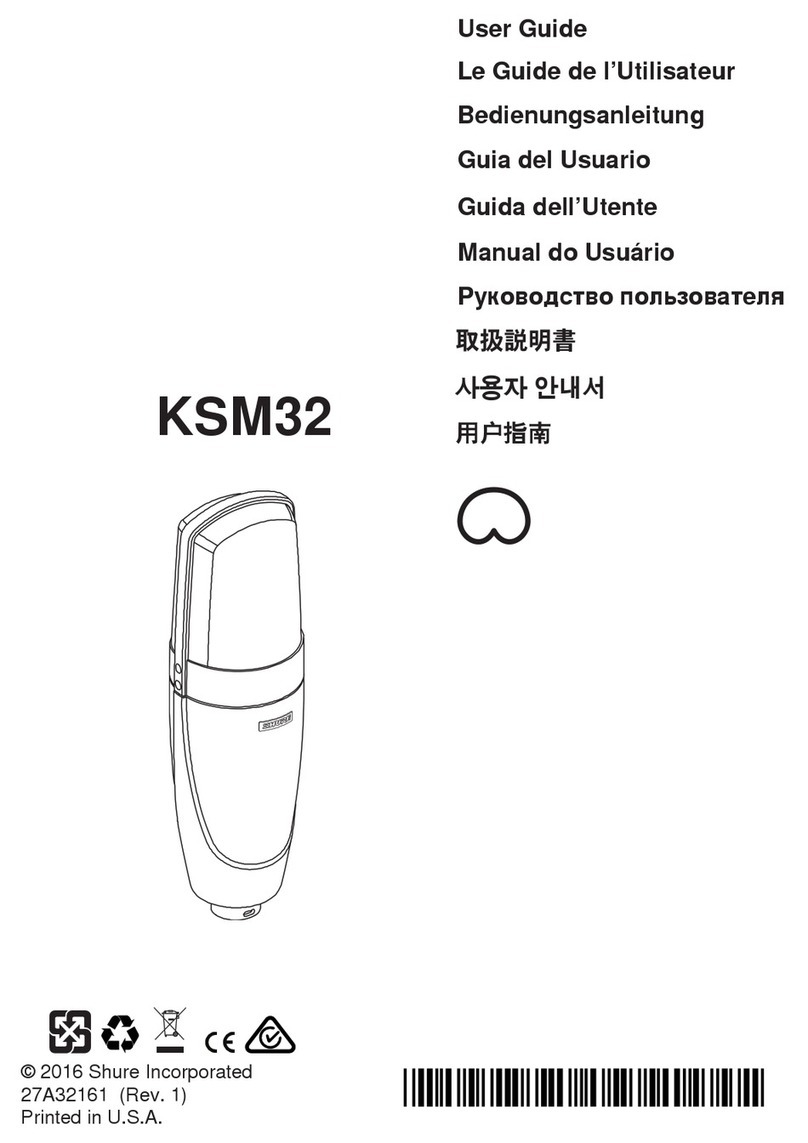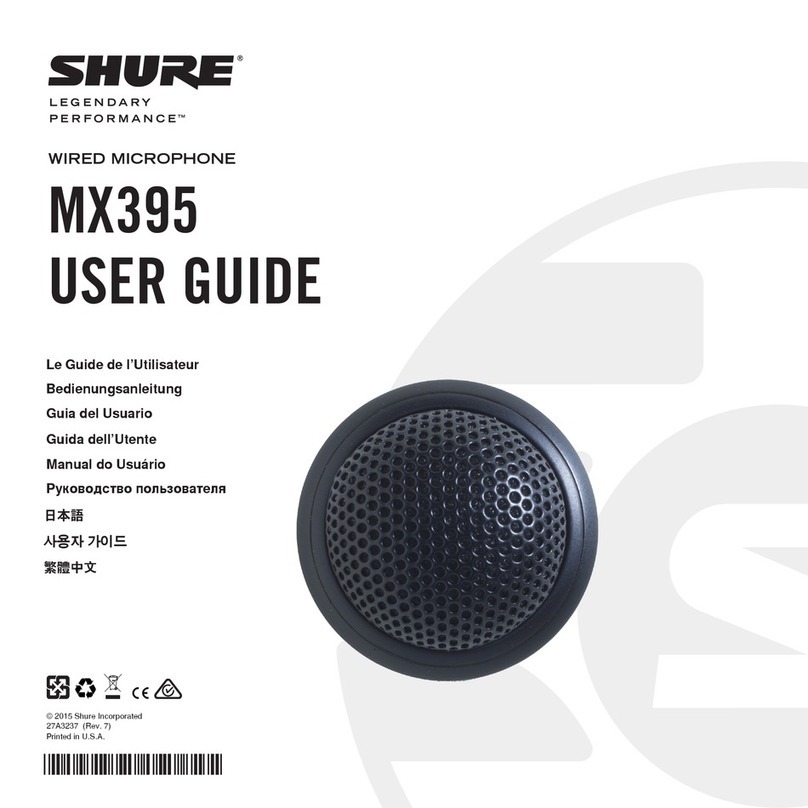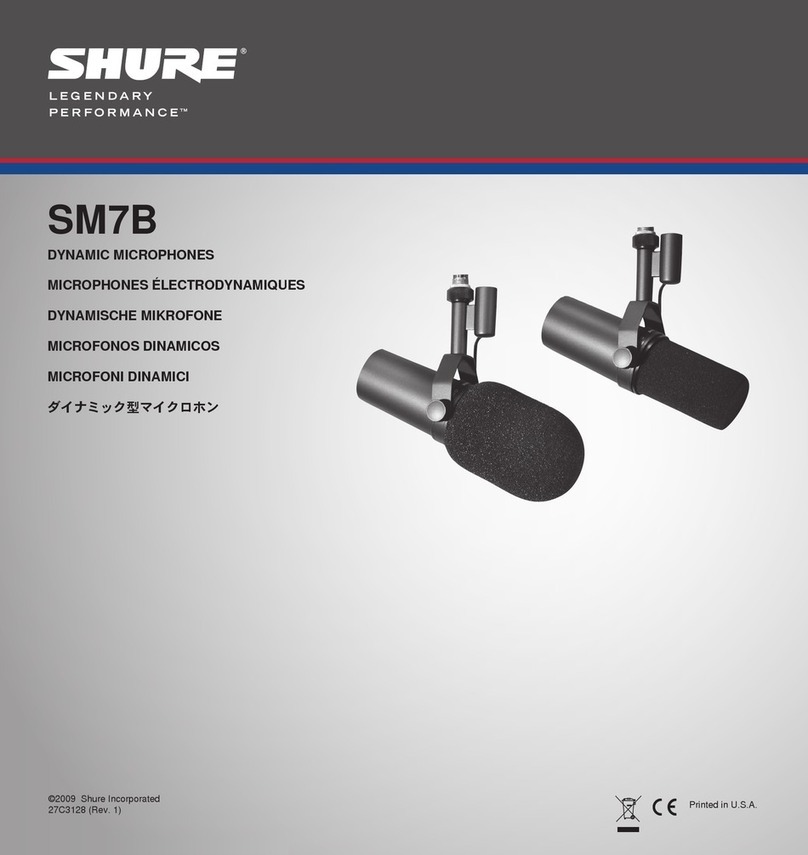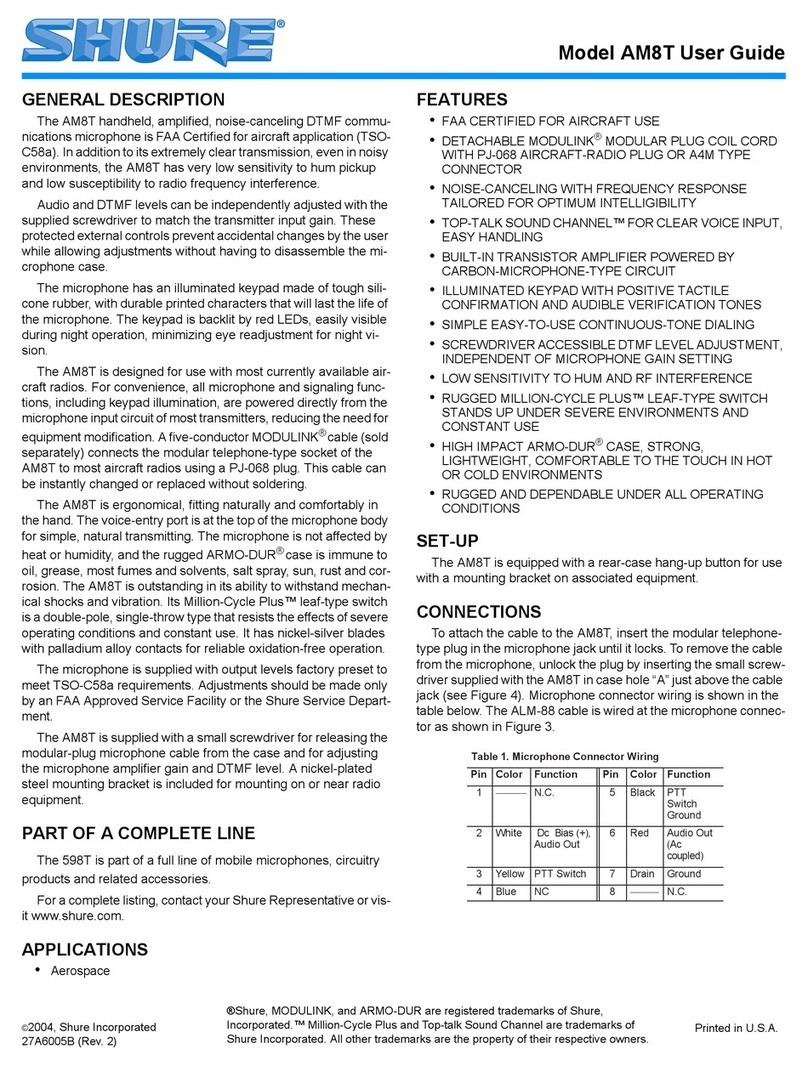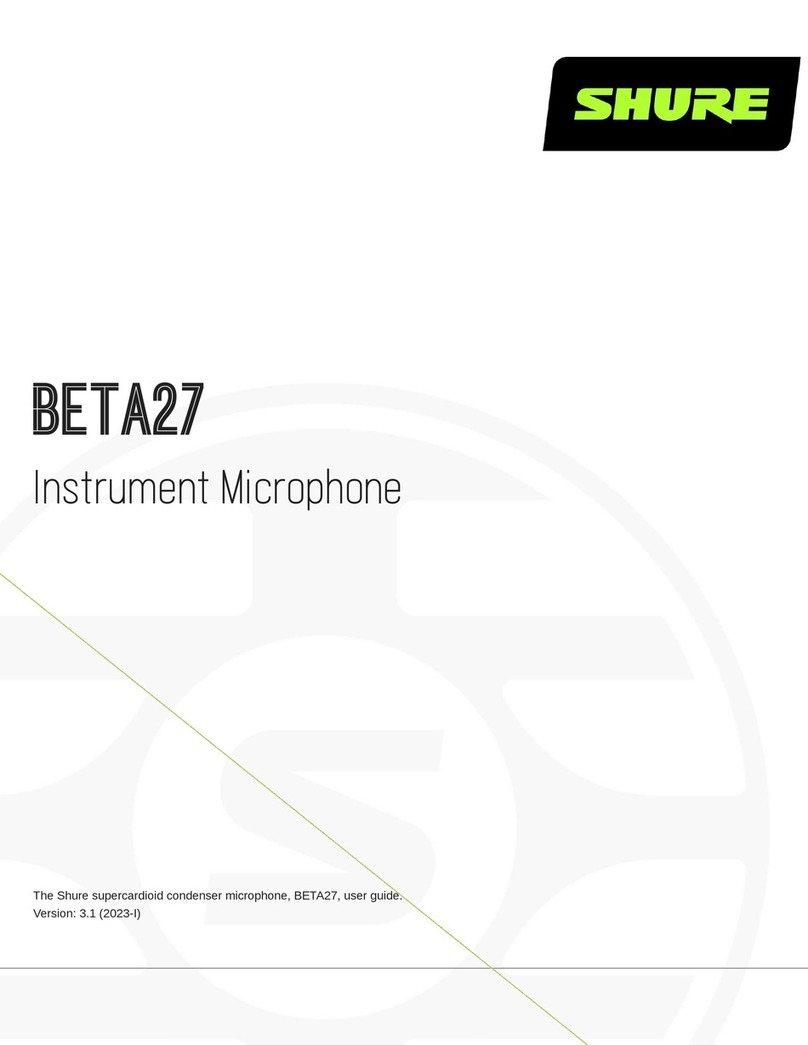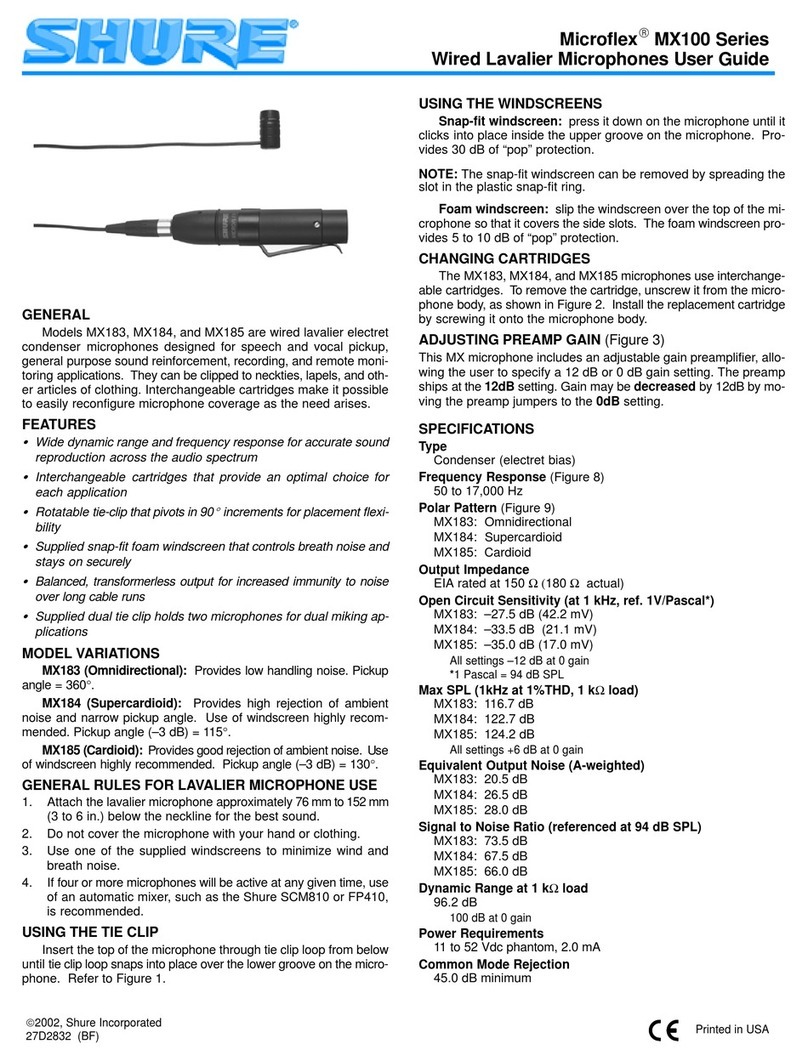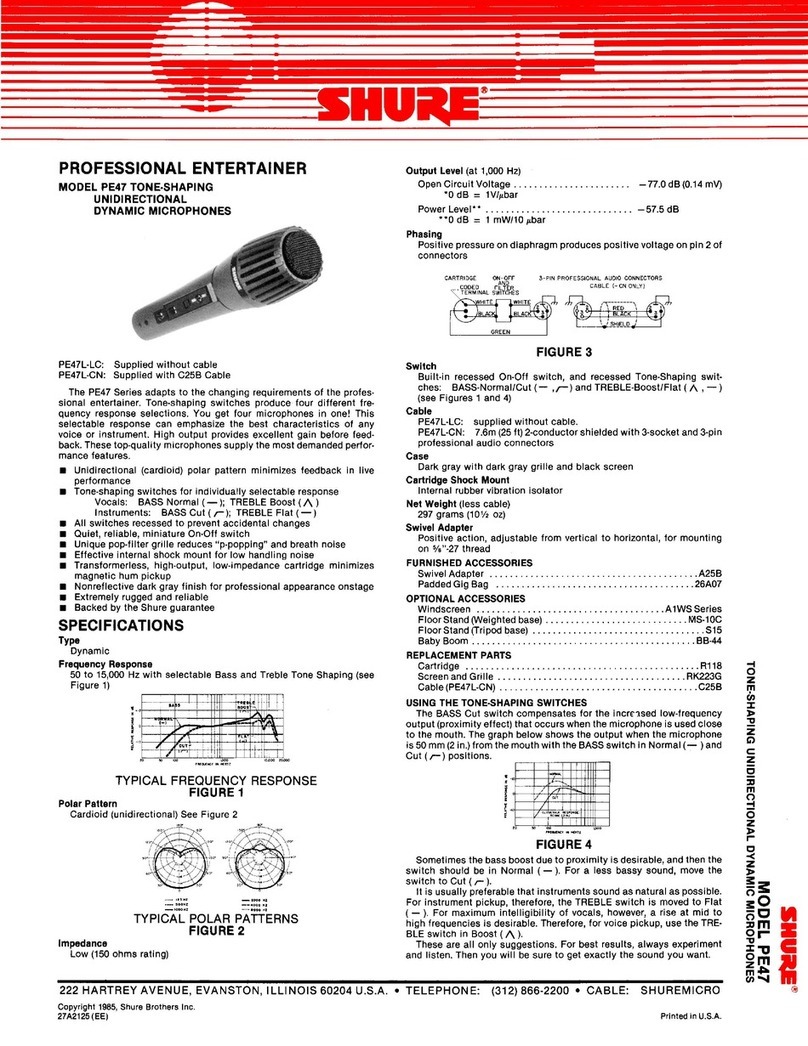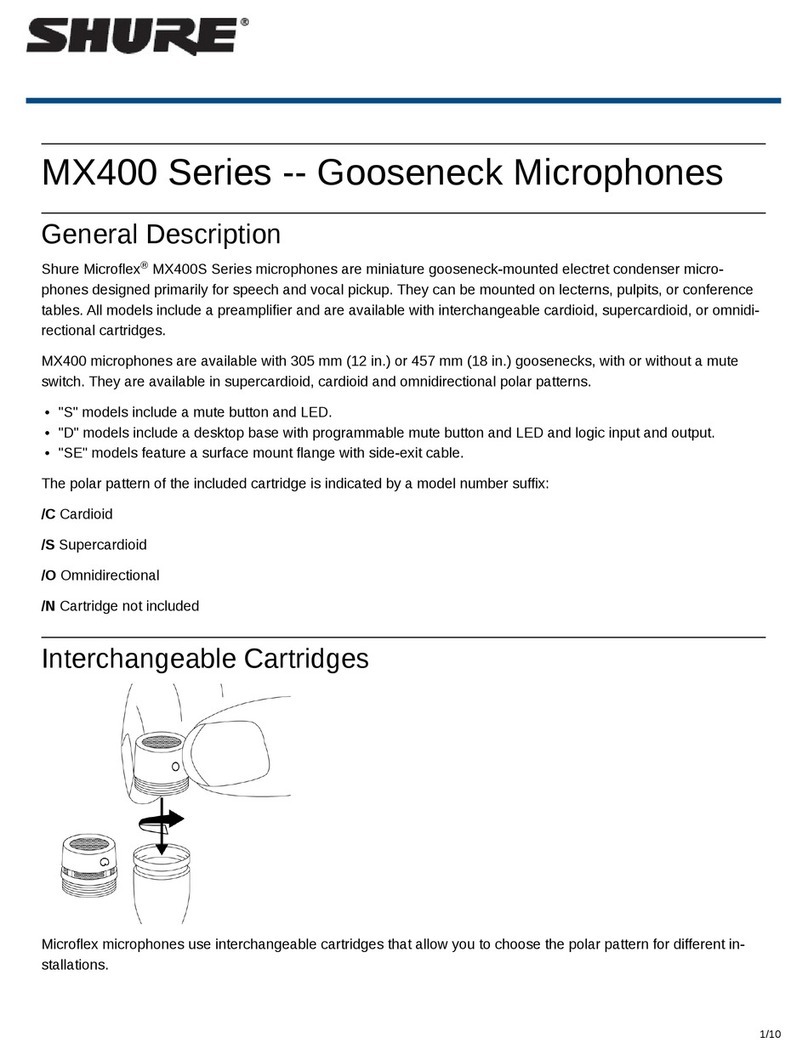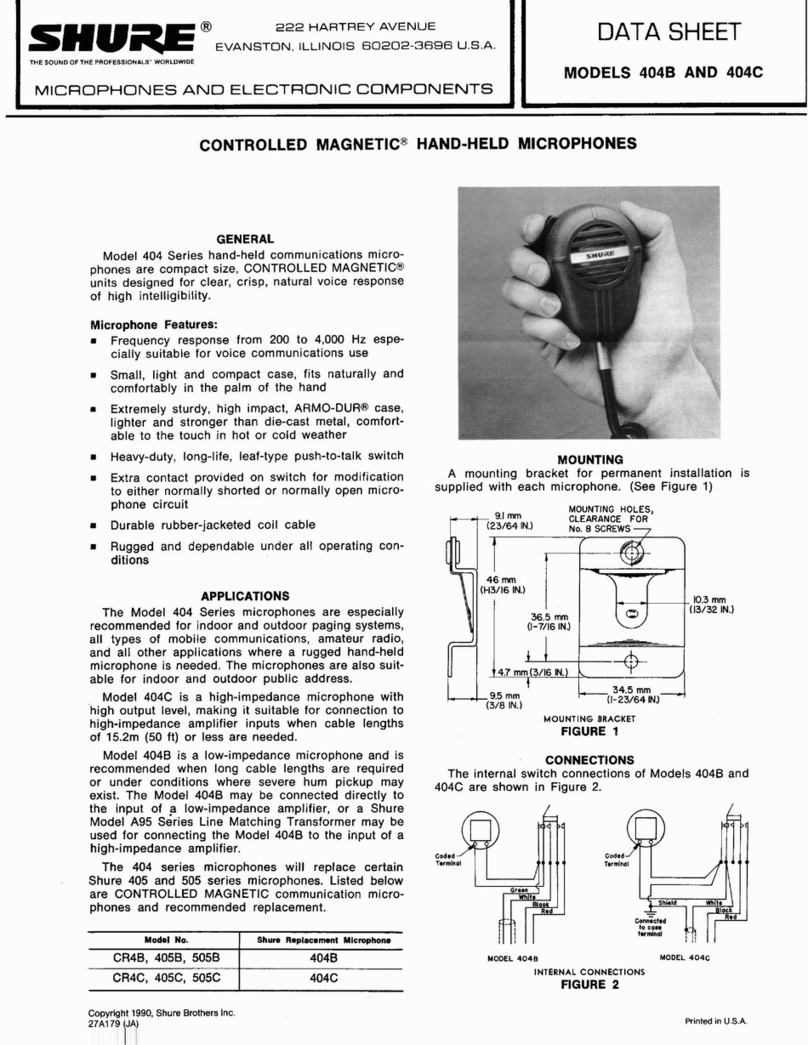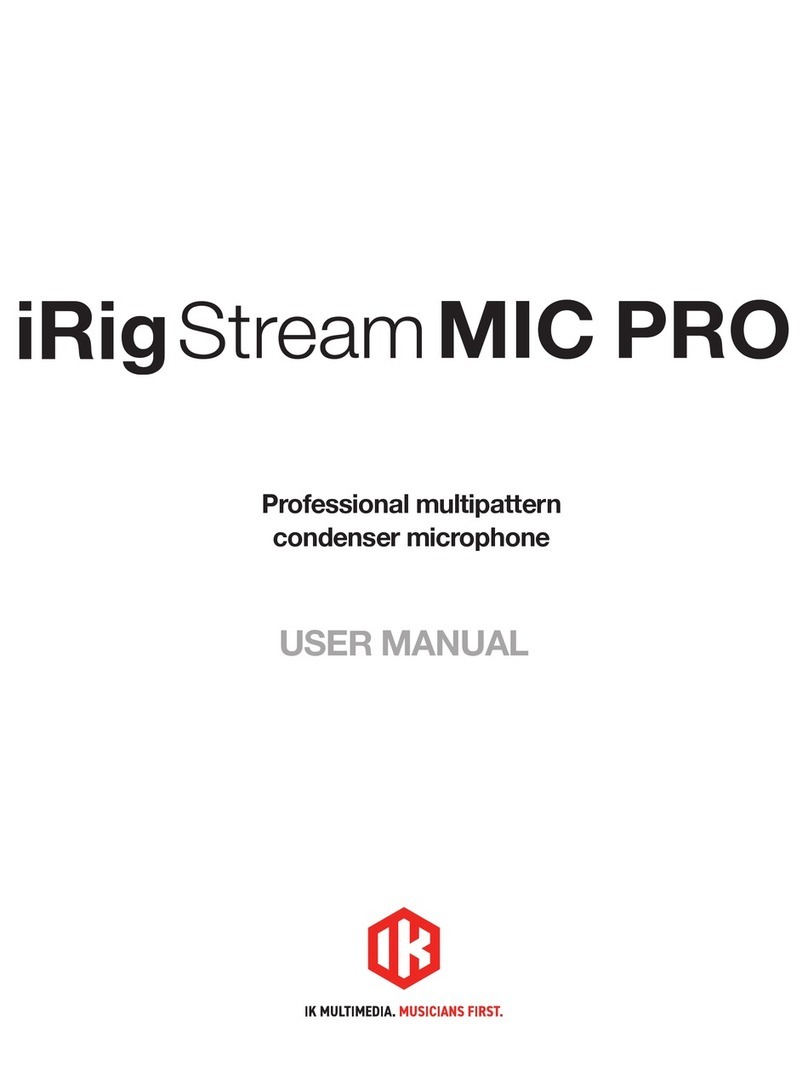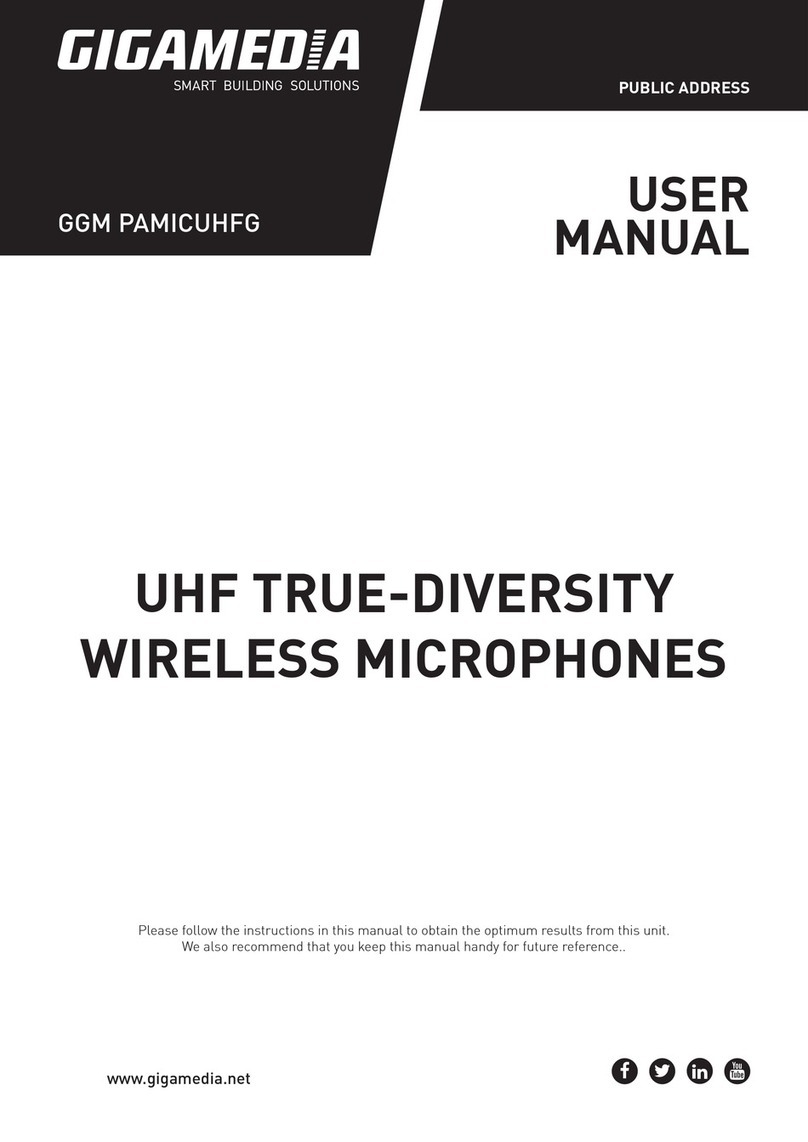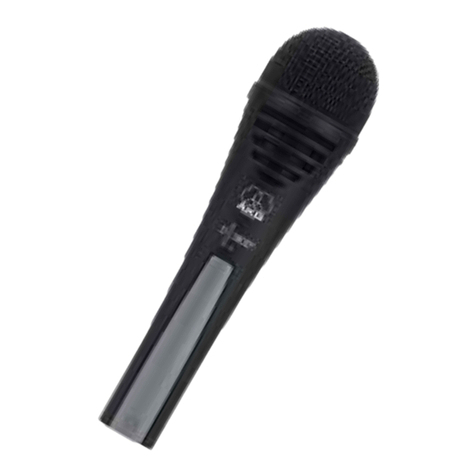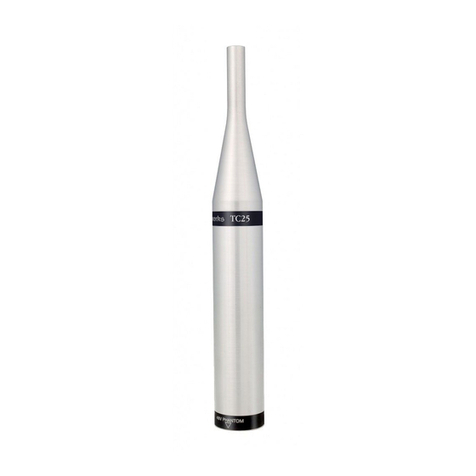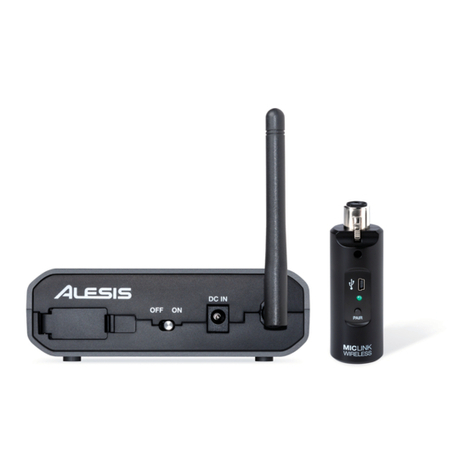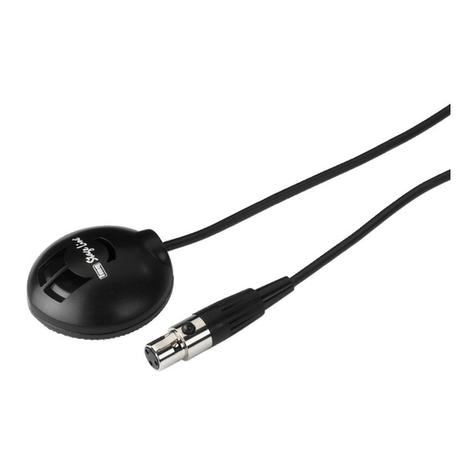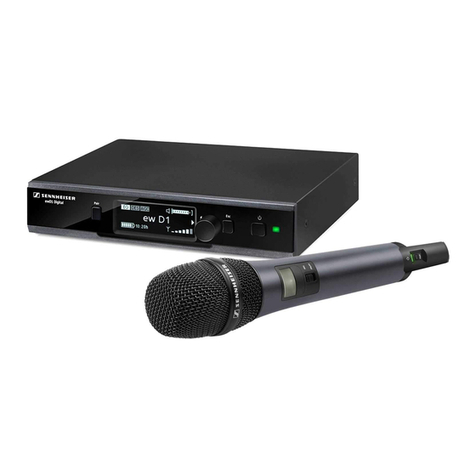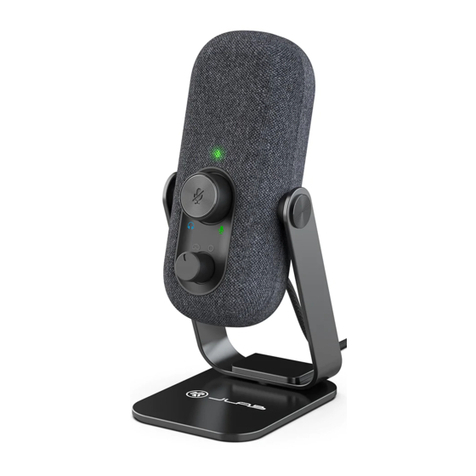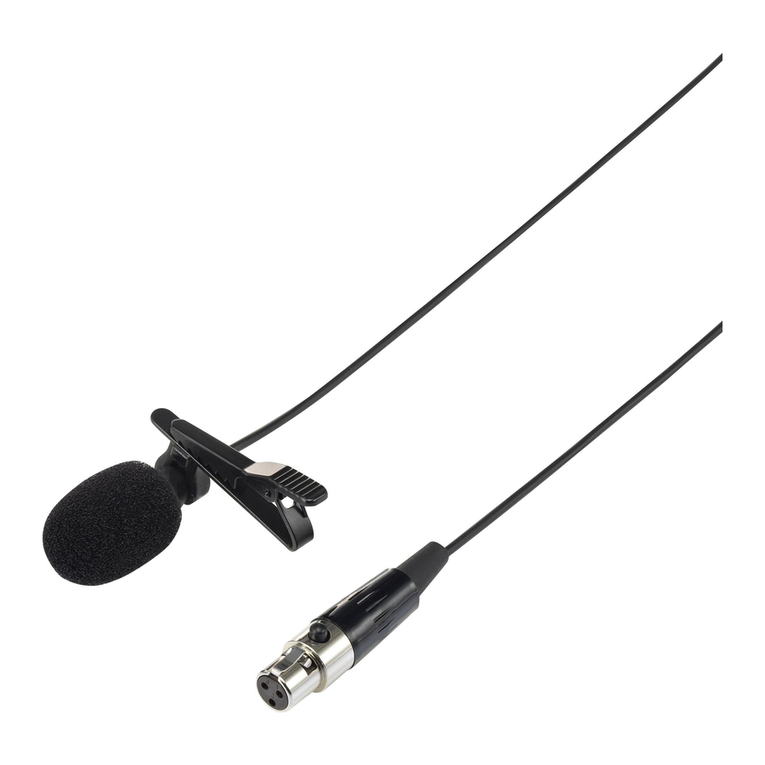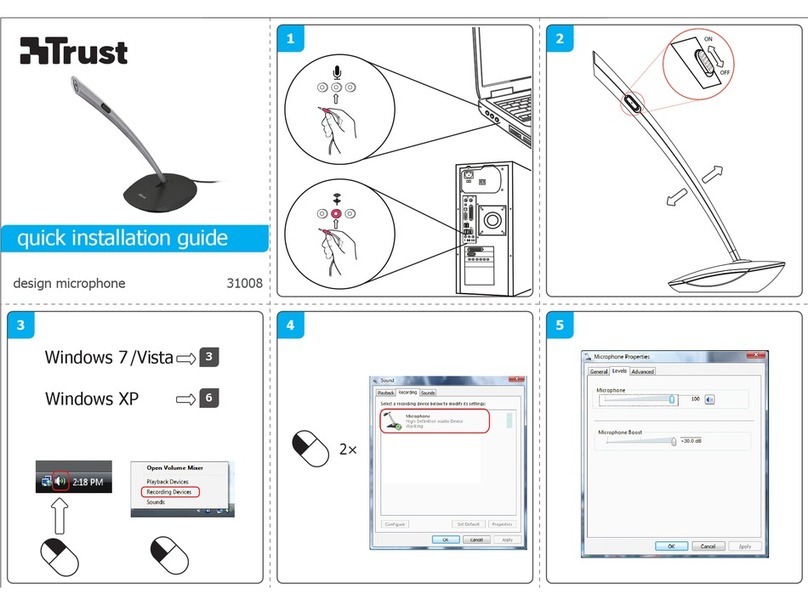SLOTTED SET SCREW
r
PLUG
ELEMENT
7
EDANCE SELECTION
SOCKET
MODELS
548,
548SD
AND
548SD-CN
IMPEDANCE
SELECTION
-
RECEPTACLE
END
OF
MICROPHONE
FIGURE
4
REED
SWITCH
CARTRIDGE TRANSFORM3 PROFESSIONAL THREE-PIN
CABLE
GROUND AUDIO CONNECTORS
TERMINAL-, rTERMINAL C0DED"A"
..LCE
BLACK I SOCKET (SHOWN IN LOW
:CASE GROUND IMPEDANCE POSITIONI
POSITIVE PRESSURE PRODUCES POSITIVE VOLTAGE ON PIN
2,
LOW IMPEDANCE; ON PIN I. HlGH IMPEDANCE.
MODELS
548SD
AND
548SD-CN
INTERNAL
CONNECTIONS
CARTRKXjE TRbNSFORMER PROFESSIONAL THREE-PIN CABLE
GROUND TERMIN,#&
TERMINAL-\
[CODED
A
AUDIO CONNECTORS
UAl F FFUAl
F
...
-
...........
,BLACK
~TI!
YELLOW
ICASE
GROUND
'-IMPEDANCE
SELECTION
POSITIVE PRESSURE PRODUCES POSITIVE VOLTAGE 'OCKET IN
ON PIN
2,
LOW IMPEDANCE;
ON
PIN I, HlGH IMPEDANCE. IMPEDANCE PoSITION)
MODEL
548
-
INTERNAL
CONNECTIONS
FIGURE
5
3. Reconnect 2-terminal impedance selection sock-
et in reverse position so that pin 3 of plug ele-
ment is inserted in socket terminal "H".
4. Reassemble plug element into microphone and
seat setscrew securely by turning out (clock-
wise).
Model 548SH is shipped connected for low-imped-
ance operation. To change to high impedance (see
Figure 6), proceed as follows:
1. Remove the two No. 2-56 screws holding the
switch to connector and switch housing.
2. Remove the nameplate and take the switch out
of the switch housing.
3. Proceed as described in steps 2 and 3 above.
4. Re-assemble switch and nameplate to switch
housing. Tighten screws securely.
CARTRIDGE TRANSFORMER SWITCH THREE-PIN PROFESSIONAL CABLE
WDlO CONNECTORS
MALE FEMPLE
bT
SHIELD
I
I
1
i;'o"g~4$
MODEL
548SH
-
INTERNAL
CONNECTIONS
FIGURE
6
CONNECTIONS
When using the microphone in low impedance, the
BLACK and WHITE cable leads are the "hot" conduct-
ors for balanced line connections to a low-impedance
amplifier input; the shield is connected to the chassis
or amplifier ground.
When using the microphone in high impedance, the
WHITE cable lead is the "hot" conductor for connec-
tion to a high-impedance amplifier input; the shield
is connected to the chassis or amplifier ground. The
BLACK cable lead should be insulated at the equip-
ment end when not used.
PHASING
To test two microphones and/or their cables for
proper phasing, connect them to an amplifier and
talk or sing into them while holding them three or
four inches apart. The sound from the speakers should
be the same when talking into either microphone or
directly between them if they are in phase with each
other. If the sound drops drastically, or if a dead spot
is found when talking between the two microphones,
either the microphones or their cables (low impedance
only) are out of phase. All cables and microphones
should be tested in this manner to insure that they
are in phase with each other.
To change the phase of a low-impedance microphone
cable, either use a Shure A15PRS Phase Reverser
or interchange the wires connected to pins 2 and 3
of the connector. To change the phase of a micro-
phone, the microphone cartridge leads must be inter-
changed (see Figures 5 and 6). This should be per-
formed by your dealer, the Shure Factory Service
Department, or other qualified service personnel.
FURNISHED ACCESSORIES
......
Swivel Adapter (548, 548SD, 548SD-CN) .A25B
Connector Locking Kit (548, 548SD,
548SD-CN)
...........................
90CK1371
Lockplate (548SH)
.....................
.90NR1371
OPTIONAL ACCESSORIES
Line Matching Transformer
.............
.A95 Series
Windscreen
...............................
A61WS
Quick Disconnect Adapter
(548, 548SD, 548SD-CN)
..............
.A45, A45B
(548SH)
...................................
A47
Desk Stand
....................
.S37A, S39A, S40A
REPLACEMENT PARTS
Cartridge (all models)
.........................
R48
Cable (548, 548SH, 548SD)
...................
.C59
(548SD-CN)
.........................
C50CN
Screen and Grille Assembly (all models)
.....
.RK38G
Plug Element (all models)
................
.RK169P
On-Off Switch (548SD, 548SD-CN)
..........
RKIO6S
(548SH)
....................
RK32S
ARCHITECTS' SPECIFICATIONS
The microphone shall be a moving coil (dynamic)
type with a frequency response of 40 to 15,000 Hz. The
unit shall have a cardioid polar characteristic. The
cancellation at the sides shall be approximately 6 dB,
and the cancellation at the rear shall be 15 to 20 dB.
The microphone shall be dual impedance with a rated
impedance of 150 ohms for connection to microphone
inputs rated at 19 to 300 ohms and "High" for connec-
tion to high-impedance microphone inputs. (Imped-
ance change shall be solderless at the microphone
connector.)

